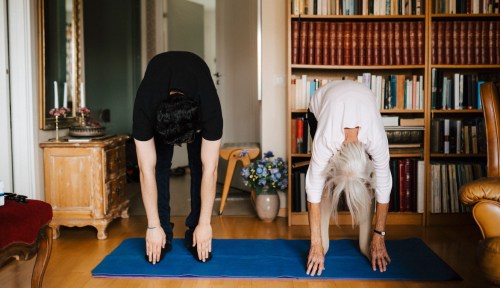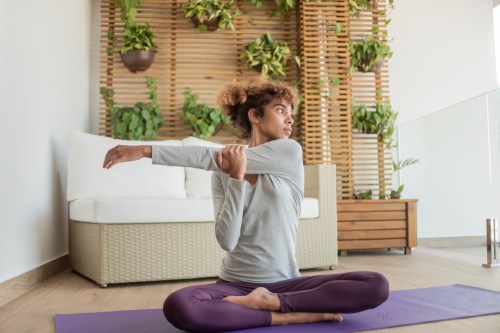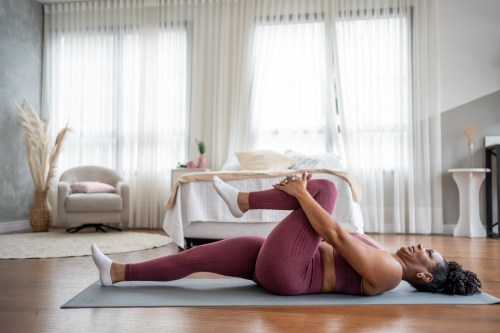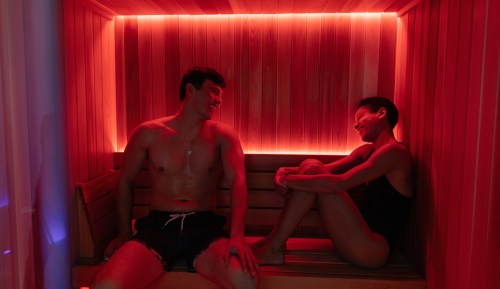The Biggest Misconception That Keeps People from Touching Their Toes When Stretching
If you're stretching and aiming to touch your toes, don't fall victim to this common misconception about what it takes.

Touching your toes while stretching sounds simple enough, right? But turns out, it really isn’t. If it isn’t quite happening easily, it might surprise you to learn which tight muscles are to blame. Jeff Brannigan, the program director at New York’s premier assisted stretching and recovery space, Stretch*d, says the problem area is more of a chain reaction than a singular problem area—and it varies completely from person to person.
Experts in This Article
program director at Stretch*d
“In the world of stretching, this is one of the most common misconceptions,” says Brannigan. “Touching your toes might seem like a simple enough stretch or position, but in reality, this is a fairly complex movement given how many muscles can be involved.”
He explains that one of the biggest problems with touching your toes is that the stretch itself doesn’t isolate any one particular area. The root cause, however, is repetitive stress placed on the body. You could feel tightness from being too sedentary or from being overly active. “Being highly sedentary is much worse for your flexibility than being extremely active, however,” says Brannigan.
When you just can’t quite reach your toes like you’re used to and the tightness sets in, the entire posterior (or back of the body) can be involved, meaning everything from the back of your neck to the bottom of your feet. “Some people will feel a stretch lower in the leg around the calf or knee, some people will feel it higher in the hamstring near the insertion point below the glute, and some people will feel it in the lower back.” Or in other words, the place where you feel it most is likely where you’re tightest.
So, how do you solve it?
You might think: I can just stretch everything at once and I’ll be good to go; however, Brannigan says this isn’t the case. “The issue is that if everything is involved and tight enough, this position can actually create a tremendous amount of pressure in sensitive areas like the lumbar spine.” Throwing every area into a stretch at once can cause your muscles to pull in different directions simultaneously, causing issues for the spine which is central to the movement of touching your toes.
The answer to combat this, according to him, is dynamic stretching and hitting each muscle in a different stretch or group of stretches. “At Stretch*d we use and recommend a form of dynamic stretching in which every muscle group has its own movement,” he says. “We’ll work our way through the body isolating each muscle group on its own to improve flexibility in a much more safe and holistic way. By targeting each area one at a time, we can get better results and create long-lasting, measurable change in the body.”
At the end of the day, it’s all about consistency but just five or ten minutes goes a long way. “I like to use an analogy of an athlete: If a basketball player never touched a basketball, would you expect them to perform well on game day? No. If you want to improve your flexibility, you need to stretch constantly,” says Brannigan.“When done correctly, stretching can be considered a form of corrective exercise. It can help create long-lasting, measurable change in the body by changing the resting state of the muscle. You just need to do it.”
So the next time you find yourself not entirely reaching those toes, take a step back and consider your overall stretch regimen Don’t have one? There’s no better time to start than now.
Try this 20-minute full-body, dynamic stretching routine to open up the muscles involved in a forward fold.
Oh hi! You look like someone who loves free workouts, discounts for cutting-edge wellness brands, and exclusive Well+Good content. Sign up for Well+, our online community of wellness insiders, and unlock your rewards instantly.
Sign Up for Our Daily Newsletter
Get all the latest in wellness, trends, food, fitness, beauty, and more delivered right to your inbox.
Got it, you've been added to our email list.










